Astronomers have discovered supermassive black holes with masses millions or billions of times that of the Sun in most massive galaxies in the local Universe, including our own Milky Way. Webb’s new observations provide evidence of an ongoing merger of two galaxies and their massive black holes when the Universe was just 740 million years old. The system is known as ZS7. Most black hole binaries are expected to be in what are called “quasi-circular” orbits. The giant black holes are thought to have been created when two smaller black holes collided and merged one day. And now scientists are wondering if we can learn about the black hole family tree by working backwards through the generations.
Webb has detected the most distant black hole merger to date. An international team of astronomers used the NASA/ESA/CSA James Webb Space Telescope to find evidence of the ongoing merger of two galaxies and their massive black holes when the Universe was just 740 million years old. It is the most distant detection of a black hole merger ever obtained and the first time the phenomenon has been detected so early in the Universe, they report in the Monthly Notices of the Royal Astronomical Society.
Astronomers have discovered supermassive black holes with masses millions or billions of times that of the Sun in most massive galaxies in the local Universe, including our own Milky Way. These black holes are likely to have had a major impact on the evolution of the galaxies they host. However, scientists still do not fully understand how these objects grew to become so massive. The discovery of giant black holes already existing within the first billion years after the Big Bang suggests that such growth must have happened very quickly and very early. Now, the James Webb Space Telescope is shedding new light on the growth of black holes in the early Universe.
Webb’s new observations provide evidence of an ongoing merger between two galaxies and their massive black holes when the Universe was just 740 million years old. The system is known as ZS7.
Massive black holes that are actively accreting matter have distinctive spectrographic features that allow astronomers to identify them. For very distant galaxies like those in this study, these signatures are inaccessible from Earth and can only be seen with Webb.
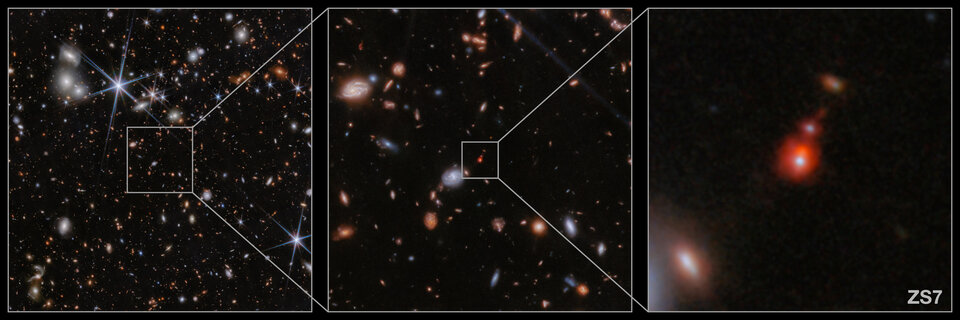
ZS7 location on PRIMER. NIRcam image
“We found evidence of very dense, rapidly moving gas in the immediate vicinity of the black hole, as well as hot, highly ionised gas illuminated by the energetic radiation that black holes typically produce during accretion episodes,” explained lead author Hannah Juebler of the University of Cambridge in the UK. “With the unprecedented clarity of its imaging capabilities, Webb also allowed our team to spatially separate the two black holes.”
The team found that one of the two black holes has a mass 50 million times that of the Sun. “The mass of the other black hole is probably similar, although it is much harder to measure because this second black hole is shrouded in dense gas,” explained team member Roberto Maiolino of the University of Cambridge and University College London in the United Kingdom.
“Our results show that mergers are an important way for black holes to grow rapidly, even in the cosmic dawn,” Hanna explained. “Together with Webb’s other discoveries of active, massive black holes in the distant Universe, our results also show that massive black holes have shaped the evolution of galaxies from the very beginning.”
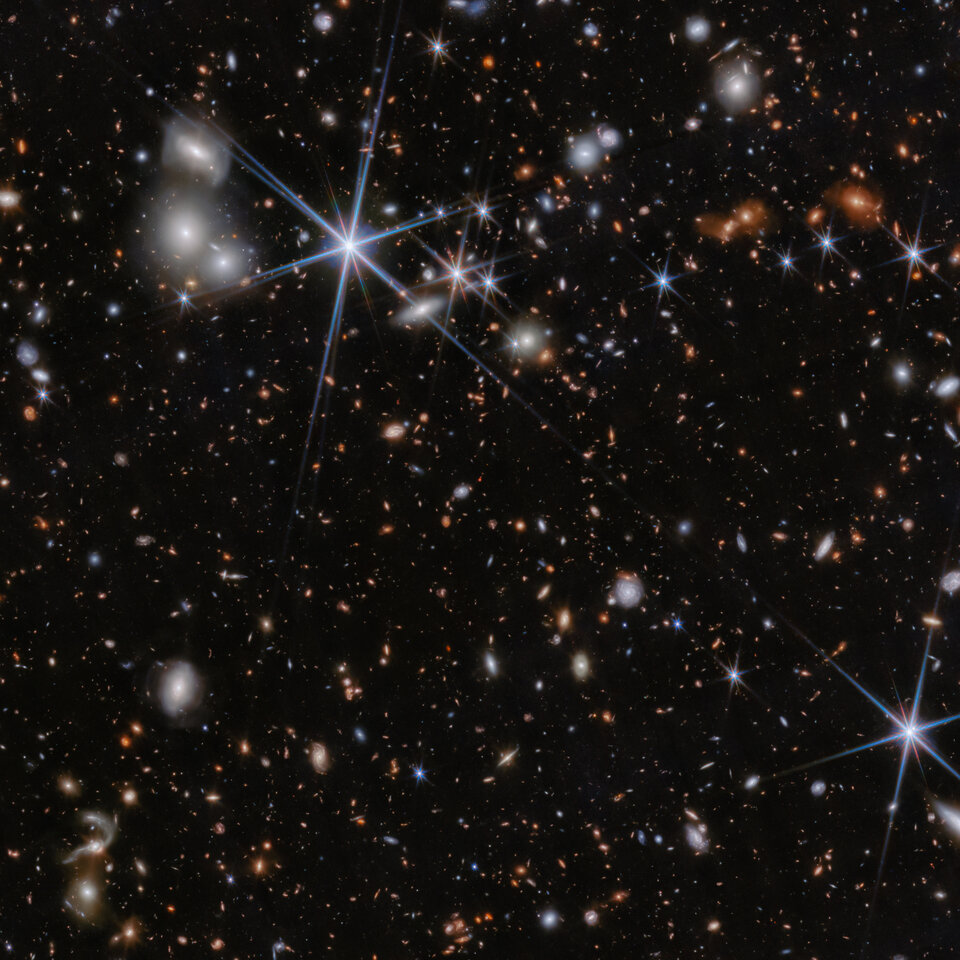
Environment ZS7. NIRcam
The team notes that once the two black holes merge, they will also begin to generate gravitational waves. Such events could be detected by the next generation of gravitational wave observatories, such as the upcoming Laser Interferometer Space Antenna (LISA) mission, which was recently approved by the European Space Agency and will be the first space observatory dedicated to studying gravitational waves.
“Webb’s results tell us that the lighter systems detected by LISA should be much more common than previously thought,” said LISA lead scientist Nora Lutzgendorf of the European Space Agency in the Netherlands. “This will likely force us to adjust our models for LISA’s performance in this mass range. This is just the tip of the iceberg.”
The discovery was made during observations conducted as part of the Galaxy Assembly with NIRSpec Integral Field Spectroscopy program. The team was recently awarded a new Large Program in Webb Cycle 3 to study in detail the relationship between massive black holes and their host galaxies during the first billion years. An important component of this program will be the systematic search for and characterization of black hole mergers. These efforts will determine the rate at which black holes merge in the early cosmic epochs and estimate the role of mergers in the early growth of black holes and the rate at which gravitational waves have been produced since the beginning of time.
Some black hole binaries may orbit each other in egg-shaped orbits. The eccentricity of these black holes’ orbits, detected using gravitational waves, can tell the story of their creation.
Using gravitational wave measurements from the Laser Interferometer Gravitational-Wave Observatory (LIGO) in the United States, as well as the Virgo and KAGRA detectors in Italy and Japan, scientists have found that the orbits of some black hole binaries may be egg-shaped and exhibit a curious wobble. The discovery of these oval orbits in black hole binaries could help researchers determine how each system formed.
“We found that most black hole binaries are expected to be in what are called ‘quasi-circular’ orbits. ‘Quasi’ simply means that the separation of the black holes decreases over time due to the emission of gravitational waves,” said lead author Nihar Gupte of the Max Planck Institute for Gravitational Physics in Germany and the University of Maryland.
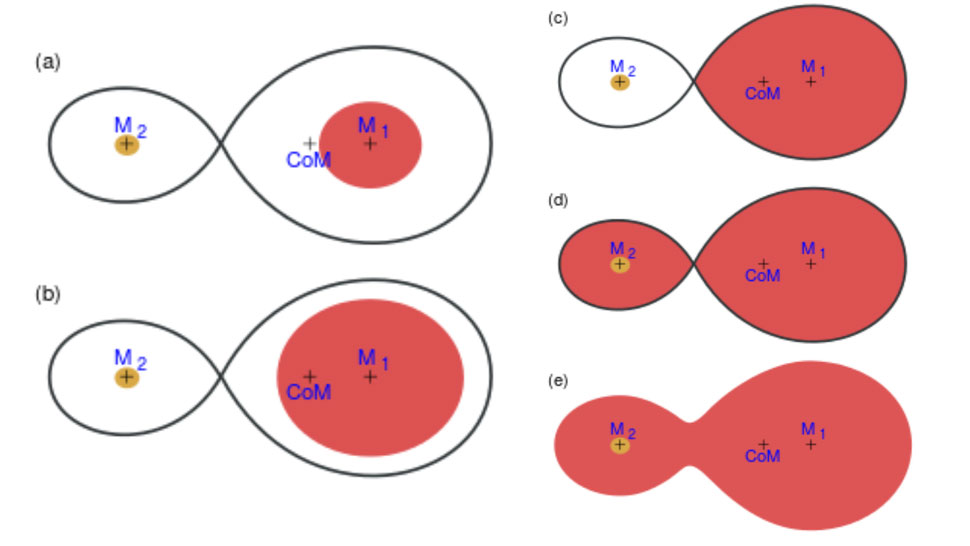
Diagram showing how a common envelope event occurs. M1 is a star turning into a red dwarf, which inflates to surround a black hole (M2) with gas (red). Durand D’Souza
“Our study shows that some of the observed black hole binaries may be in ‘eccentric’ orbits,” Gupte added. “This means that the black holes’ orbits are oval or ‘egg-shaped.'”
The team also found that the tip of this egg-shaped oval orbit may rotate as the black holes orbit each other, the researcher said.
“We also found that if we analyse these events using a non-eccentric model, the masses of the black holes will be overestimated,” Gupte added.
Gupte and his colleagues examined 57 pairs of binary black holes detected using gravitational waves by the LIGO-Virgo-KAGRA collaboration. Gravitational waves are ripples in space-time first predicted by Albert Einstein in his famous 1915 theory of general relativity.
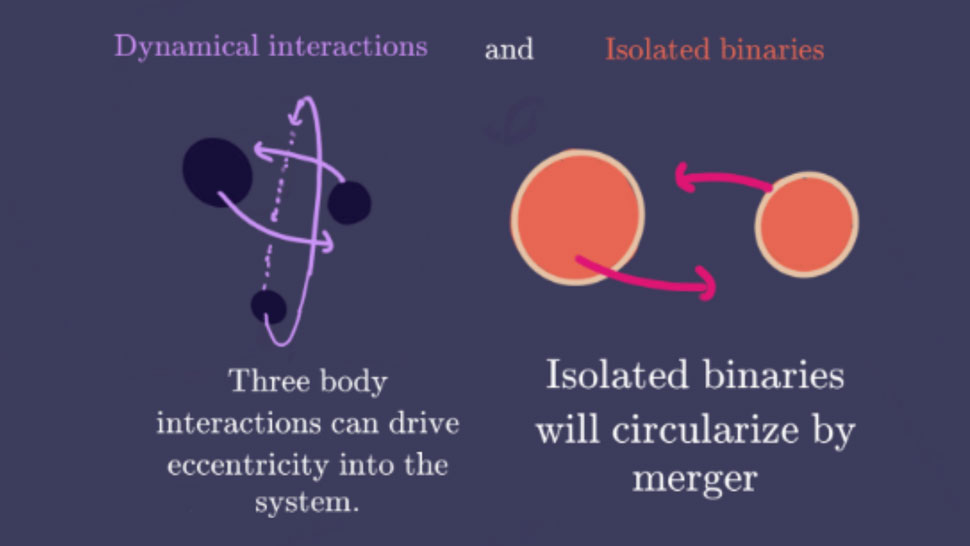
A diagram showing two possible mechanisms for the formation of a binary black hole, between which one can choose by examining the eccentricity of these configurations. Nihar Gupte
General relativity suggests that objects with mass create curvature in the very fabric of space and time, which is combined into a four-dimensional entity called spacetime. Gravity arises from this curvature, which becomes more extreme as objects become more massive. This is why stars have a greater gravitational influence than planets, and why galaxies have a greater gravitational influence than stars.
Einstein also predicted in this revolutionary theory of gravity that when objects accelerate, they send out tiny ripples that radiate through space-time—gravitational waves. However, these ripples are insignificant until you reach the region of super-dense objects like neutron stars and black holes.
When binary neutron stars or black holes orbit each other, they continually emit gravitational waves that carry away energy from the system in the form of angular momentum. The loss of angular momentum causes the orbits of these bodies to shrink, drawing them closer together until their gravitational influence takes over. Eventually, they collide and merge.
Einstein thought that even these gravitational waves would be too weak to detect on Earth. Fortunately, in September 2015, LIGO proved the great scientist wrong by detecting GW150914, a gravitational wave signal from the merger of two black holes more than 1 billion light years away.
As the number of gravitational wave detections continues to grow, scientists like Gupta are learning to use them to reveal details about the objects that produce them, as this new study shows.
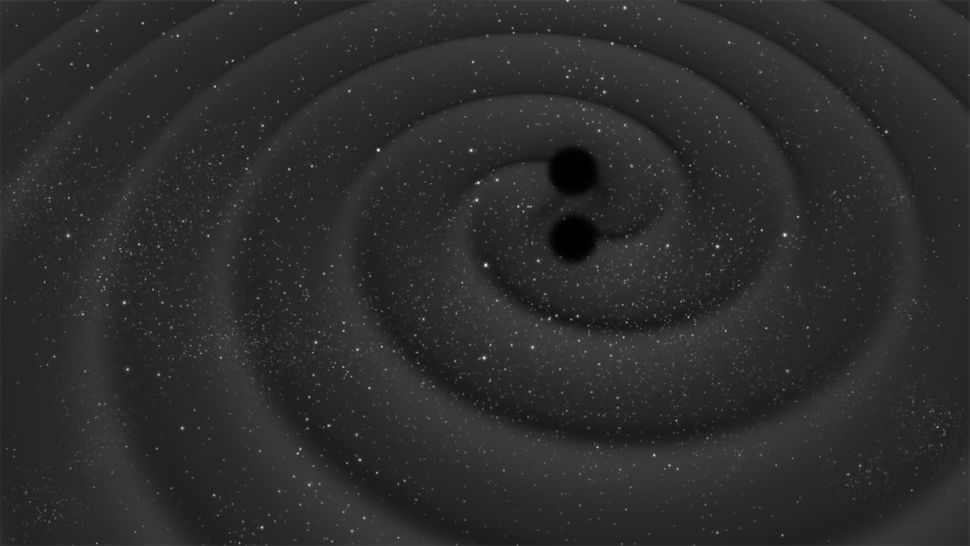
Illustration of binary black holes ringing through spacetime like a bell with gravitational waves. ESA–C.Carreau
Gupta explained that using gravitational waves to understand the orbits of binary black holes is similar to how paleontologists study bones to reconstruct how dinosaurs might have lived. In this way, physicists can study the properties of merging binary black holes to understand how binary black holes merge in the first place.
This can happen in two different ways. Dynamical interactions occur when a black hole binary collides and interacts with another black hole or even another black hole binary system.
On the other hand, binary stars can be isolated and form more easily: from two stars already orbiting each other that become black holes, or from one black hole that gets too close to another and forms a binary star before they collide and merge.
“The key idea is that if we see a binary star with eccentricity, it’s likely the result of dynamical interactions,” Gupta said. “These chaotic interactions can break the binary apart and eject the black holes that make up the binary from their host galaxies and galaxy clusters. But sometimes they can also shrink the distance between the two black holes, causing eccentricity and causing them to merge in short order.”
In addition to using orbital eccentricity to study binary black holes, the scientist and his team are also interested in studying how the oval nature of the orbits affects the emission of gravitational waves by these systems.
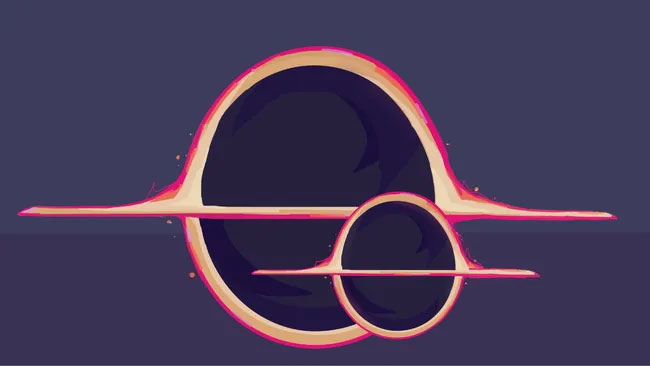
Illustration of binary black holes with egg-shaped orbits. Nihar Gupte
“When you have eccentricity, it means that at some points in the orbit, the black holes are closer to each other,” Gupta explained. “When the black holes are closer to each other, they have more acceleration, which means they emit more gravitational waves. On the other hand, if they are farther away, they have less acceleration, which means they emit fewer gravitational waves.”
“So what you end up seeing is little spikes in the amplitude of the waveform of the overall gravitational wave pattern that are caused by the black holes moving closer and further apart!”
The nature and history of black hole binaries would be incredibly difficult to determine without the use of gravitational waves. An alternative method for understanding the origins of black hole binaries is to search for so-called “common shell” events using standard light astronomy.
These events begin with a star and a black hole orbiting each other, and the star turns into a red giant. The outer layers of the bloated star create a common shell around both occupants of the binary, creating friction between the black hole and the star. This compresses the orbit of the binary, and eventually, after the red giant becomes a black hole, this leads to the binary black hole merging.
“The problem is that observing this critical period with electromagnetic observations is difficult. This is because massive stars are rare and short-lived, so the critical evolutionary phases of compact object mergers occupy a small fraction of these systems,” Gupta said. “On the other hand, by studying gravitational waves, we can understand the final moments of a binary merger. This may allow us to trace the history of the merger and hypothesize what may have formed it.”
He added that gravitational waves are particularly useful in this regard because they are an “extremely clean probe” of distant events. This refers to the fact that these ripples in space-time can travel vast distances without interference from whatever lies between the binary star and Earth.
“While we do not claim that this is the definitive detection of eccentric black hole binaries, these results indicate eccentricity in the existing population,” Gupte said. “This is an important consideration for the current observing run of the ground-based gravitational wave detector, as well as for future ground-based and space-based gravitational wave detectors.
“We currently don’t have enough data to definitively determine the origin of black hole binaries. However, if we observe more eccentric black hole binaries in the future, we may be able to begin to put constraints on what mechanisms form these systems.”
Black holes are monstrous, monolithic regions of space and time that have captured the imagination of humanity. Some are created by the death and collapse of a massive star – but no star can create the most colossal black holes. These are the supermassive black holes that lurk at the heart of galaxies with masses equivalent to millions or even billions of suns.
Giant black holes like these are thought to have been created when two smaller black holes collided and merged one day. And now scientists are wondering if we can learn about the black hole family tree by working backwards through the generations.
If there is a cosmological object or event destined to be mysterious, it is a black hole. This region of space is marked by a boundary called the event horizon, a barrier between our universe and everything inside the void itself. It is therefore impossible to receive a signal, and therefore information, from beyond this barrier.
In addition, black holes have very few identifying characteristics, as theoretical physicist John Wheeler once described by saying, “Black holes have no hair.” This means that, unlike looking at the hair color or complexion of a child and guessing at the hair color and weight of its parents, “hairless” supermassive black holes don’t seem to give away any clues about their origins—or do they?
Imre Bartos is a physicist at the University of Florida who theorizes that the limited properties of supermassive black holes—mass, spin, and electric charge—may actually hide details of the original black hole assembly line that created them.
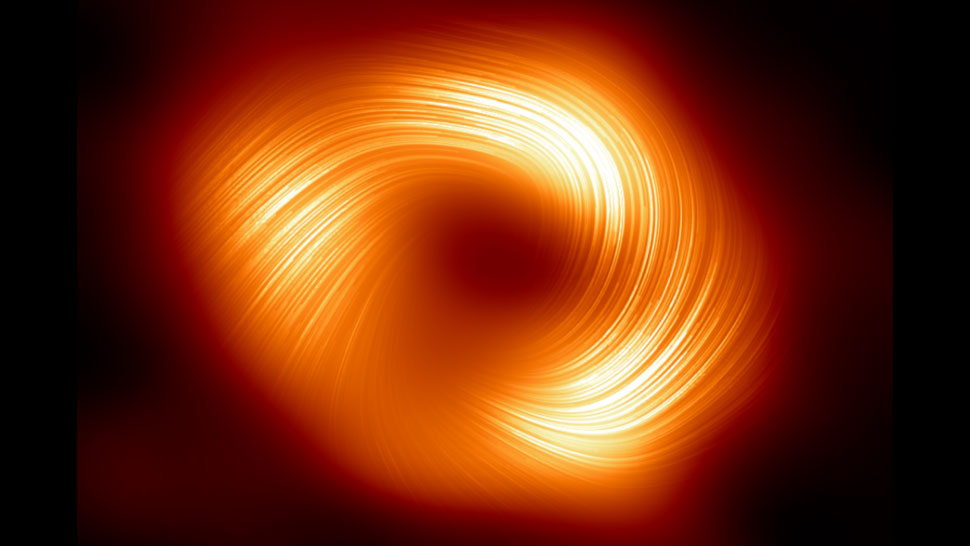
The supermassive black hole at the center of the Milky Way, Sgr A*, has been seen in polarized light for the first time. EHT Collaboration
The standard picture of black hole birth, which involves the death and collapse of massive stars, he says, cannot explain the creation of the huge black holes we see today. This includes both supermassive black holes and the relatively smaller intermediate-mass black holes, with masses of about 100 to 100,000 solar masses.
Stars have a limit to how big they can get without collapsing in on themselves. If a star gets very big, it will explode before it has a chance to create that dense core that can form the seed of a black hole. How heavy can black holes be when they form from the death of stars? That’s about 50 times the mass of our Sun. So that’s a pretty big mass, but nowhere near as big as the mass we see for supermassive or intermediate-mass black holes.
This means that there must be some other process creating the most monstrous black holes, and observations of tiny disturbances in spacetime called gravitational waves suggest that such a process may be successive collisions and mergers of ever larger generations of black holes.
Understanding why black holes come together and merge is key to understanding how the Universe evolved, and may even help get to the bottom of the laws of fundamental physics.
By looking at the mass of a supermassive black hole and the gravitational waves from the merger that created it, researchers can estimate the masses of the black holes that must have merged to create it in the first place. What’s more, Bartos and his colleagues suggest that observing how fast a black hole spins could also reveal how fast the parent black holes that created it were spinning.
Studying electromagnetic signals from the region where these mergers occurred can reveal how they interacted with their environment. For example, did the black holes feed on gas and dust from their surroundings to fuel their own growth?
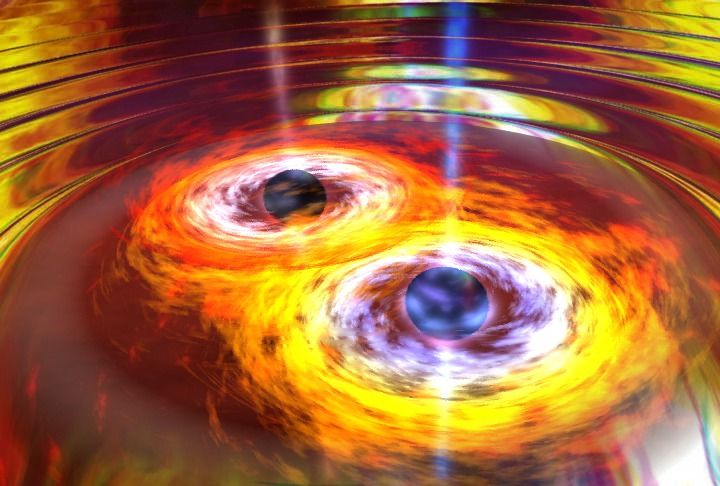
When two supermassive black holes spiral around each other and merge, they create gravitational waves. With enough energy, they can “throw” themselves out of their starting point or even out of their home galaxy entirely. NASA
Black holes with masses 50 times greater than the Sun can be found in regions with many other black holes. This means that, just as we have parents and grandparents, black hole mergers are probably not unique events, and the most massive black holes are the result of repeated generations of mergers.
This generational situation will not only lead to an accumulation of mass, but subsequent daughter black holes will also collect angular momentum from their ancestors. As black holes get bigger and bigger, they should also spin faster and faster.
If we detect higher spin, it could be a sign that there may have been previous mergers. It turns out that for some of the heavier black holes we’ve seen so far, we see that there’s a hint of the high spin that we would expect from these successive mergers. But we can’t detect previous mergers just by looking at gravitational waves. To do that, we’d have to run the detectors for millions of years, which is unlikely.
The chain of mergers that would create a supermassive black hole is thought to take at least 1 billion years, but these cosmic titans have been observed in the universe just a few hundred million years after the Big Bang. These observations come courtesy of the James Webb Space Telescope (JWST). That leaves a problem. Scientists have yet to fully explain how these cosmic titans got so big, so fast. However, clues may lie in the ancestral mechanism itself.
As gravitational wave detectors become more sensitive, humanity will notice these ripples in space and time from more distant, and therefore earlier, black hole mergers. This means that we should continue to learn more and more about how black holes have grown over the 13.8 billion years of cosmic history.
Mysterious glitches in supermassive black hole likely caused by ‘hits’ from neighboring black hole. A hiccupping supermassive black hole has alerted astronomers to a completely new type of black hole behavior, the journal Science Advances reports.
In 2020, a previously quiet black hole at the center of a galaxy located about 800 million light-years from Earth and with a mass equivalent to 50 million suns suddenly exploded, brightening the matter around it by 1,000 times.
A team of researchers believes that these periodic eruptions are caused by a second, smaller black hole crashing into the disk of gas and dust, or “accretion disk,” surrounding the supermassive black hole, causing it to repeatedly “eject” matter.
The results of the study challenge the generally accepted picture of how black hole accretion disks function. Previously, scientists believed that they were uniform disks of gas and dust orbiting a central black hole. However, the new results suggest that some accretion disks may contain exotic components, such as stars and even smaller secondary black holes.
“This is a different beast. It doesn’t match anything we know about these systems. We thought we knew a lot about black holes, but this tells us they’re capable of so much more,” study team member Dheeraj “DJ” Pasham, a scientist at the Massachusetts Institute of Technology’s Kavli Institute for Astrophysics and Space Research, said in a statement.
The team initially learned about this hiccupping black hole while studying data from the All-Sky Automated Survey for Supernovae (ASAS-SN) – a network of 20 telescopes around the world that scan the entire sky above Earth once a day.
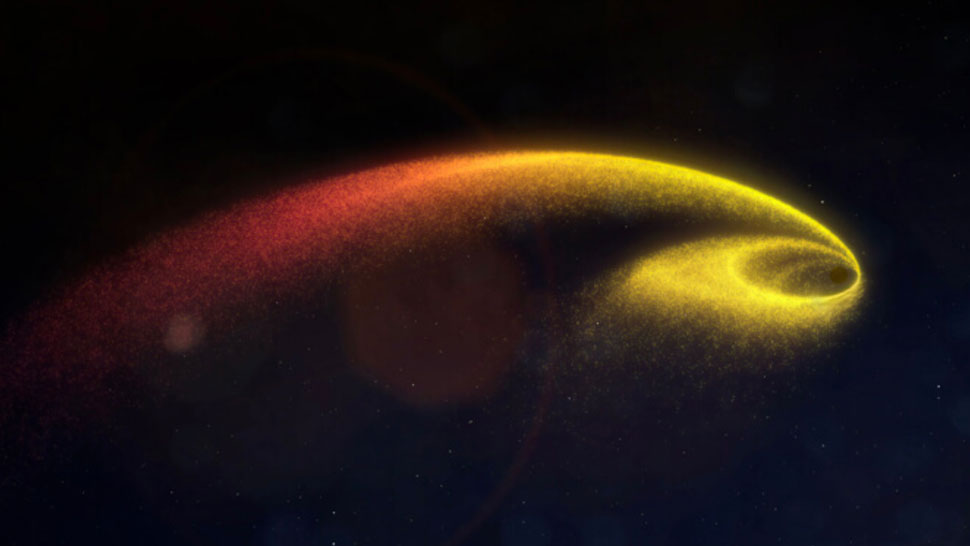
An illustration shows the aftermath of a black hole tearing apart and consuming a star in a tidal disruption event. NASA Goddard Space Flight Center/Chris Smith (USRA/GESTAR)
When ASAS-SN automatically scanned the sky in December 2020, the robotic telescopes spotted a flash of light in a previously quiet patch of sky containing a galaxy located about 800 million light-years away. Pasham pursued the flash using the Neutron Star Interior Composition Explorer (NICER), NASA’s X-ray telescope on the International Space Station (ISS).
Pasham had little time left to use the ISS telescope, which is used to search space for X-ray bursts from neutron stars, black holes and other extreme gravitational phenomena, which meant he had to act quickly and hope for luck.
“Use it or lose it, and that turned out to be my biggest success,” Pasham said.
The researcher saw that this galaxy continued to flare, and its outburst lasted for about four months. In NICER observations of this outburst, Pasham noticed a curious pattern of subtle dips in the X-rays and energy of the outburst every 8.5 days. The signal almost resembled a dip in light that occurs when an exoplanet crosses, or “passes,” the face of its star, briefly blocking its starlight.
“I was puzzled about what this meant because this pattern doesn’t match anything we know about these systems,” Pasham added.
Pasham’s confusion was cleared up when he discovered a study suggesting that the supermassive black hole at the center of the galaxy may be orbited by an intermediate-mass black hole — a black hole with a mass between 100 and 10,000 times that of the Sun.
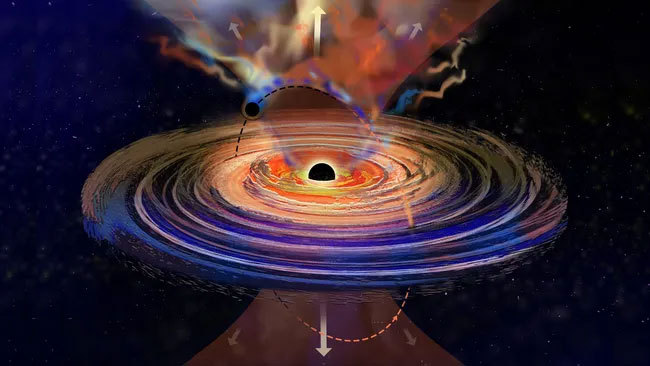
A second black hole is smashing through the accretion disk of its supermassive companion, causing cosmic ‘situations’. Jose-Luis Olivares, MIT
This smaller black hole could orbit its larger counterpart in such a way that it dips in and out of the supermassive black hole’s accretion disk. As the smaller black hole plunges through this gas and dust, it ejects a plume of gas. Each plunge would create another plume, hence the periodic pattern of this “hiccup.”
If these plumes are directed towards Earth, they could be observed as a sudden drop in energy in the affected system, as the light from the accretion disk is periodically dimmed, similar to how starlight is dimmed by a transiting exoplanet.
“I was very excited about this theory and immediately emailed them and said, ‘I think we are seeing exactly what your theory predicts,'” Pasham added.
This prompted the authors of the original study to create simulations that included the NICER data. They confirmed that the observed 8.5-day signal was likely the result of a small black hole punching through the accretion disk of its larger supermassive black hole companion.
However, this still doesn’t explain why the supermassive black hole suddenly exploded — just why the outburst periodically dims. The team thinks the black hole was created because a star recently came too close to its outer edge, or “event horizon.”
The enormous gravitational pull of the supermassive black hole will generate enormous tidal forces in the approaching stars, stretching them vertically and squashing them horizontally in a process called “spaghettification.” This will cause the star to be torn apart in a tidal disruption event, causing a powerful flash of light and a sudden influx of matter that will brighten the accretion disk.
In the case of the newly discovered galaxy, the added material appeared to feed the supermassive black hole for the four months that the explosion lasted, and also meant that when the smaller secondary black hole plunged into the material, it ejected a larger plume of gas into the air than usual.
“We see evidence of objects entering and passing through the disk at different angles, challenging the traditional picture of a simple gaseous disk around black holes,” Pasham said. “We think there is a huge population of such systems.”
Richard Saxton, an X-ray astronomer at the European Space Astronomy Centre in Madrid who was not involved in the study, said the new results and the technique used to obtain them could help astronomers better understand supermassive black holes and the exotic environments they inhabit.
“This result shows that very close supermassive black hole binaries may be common in galactic cores, which is a very exciting advance for future gravitational wave detectors,” Saxton said in a statement. “It’s a brilliant example of how to use debris from a disrupted star to illuminate the otherwise dark interior of a galactic core. It’s like using a fluorescent dye to find a leak in a pipe.”




